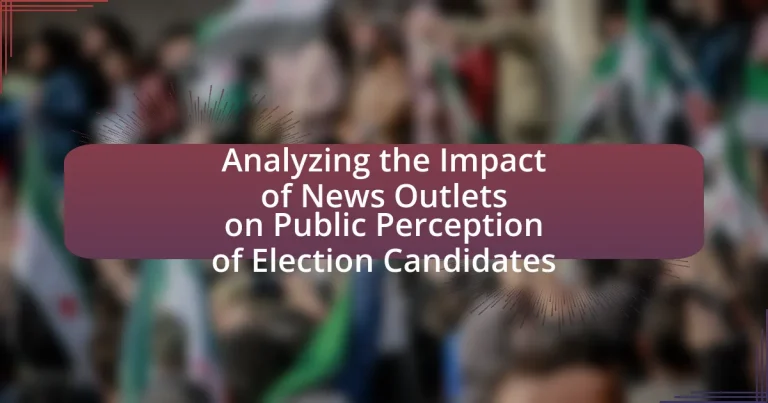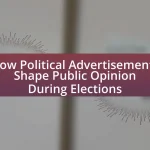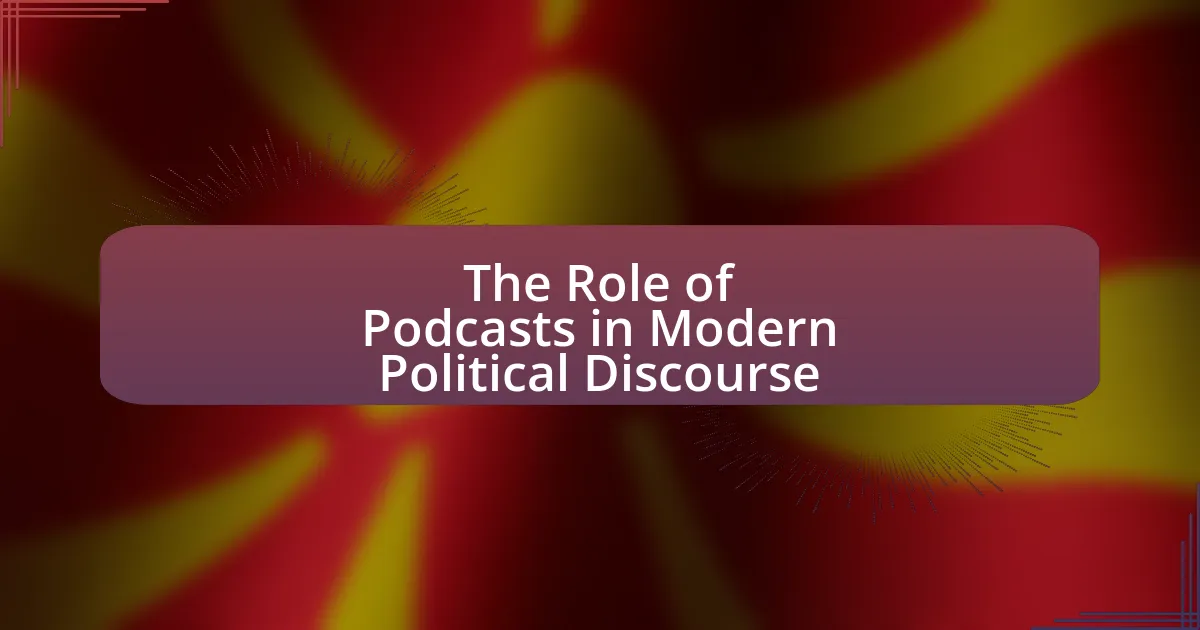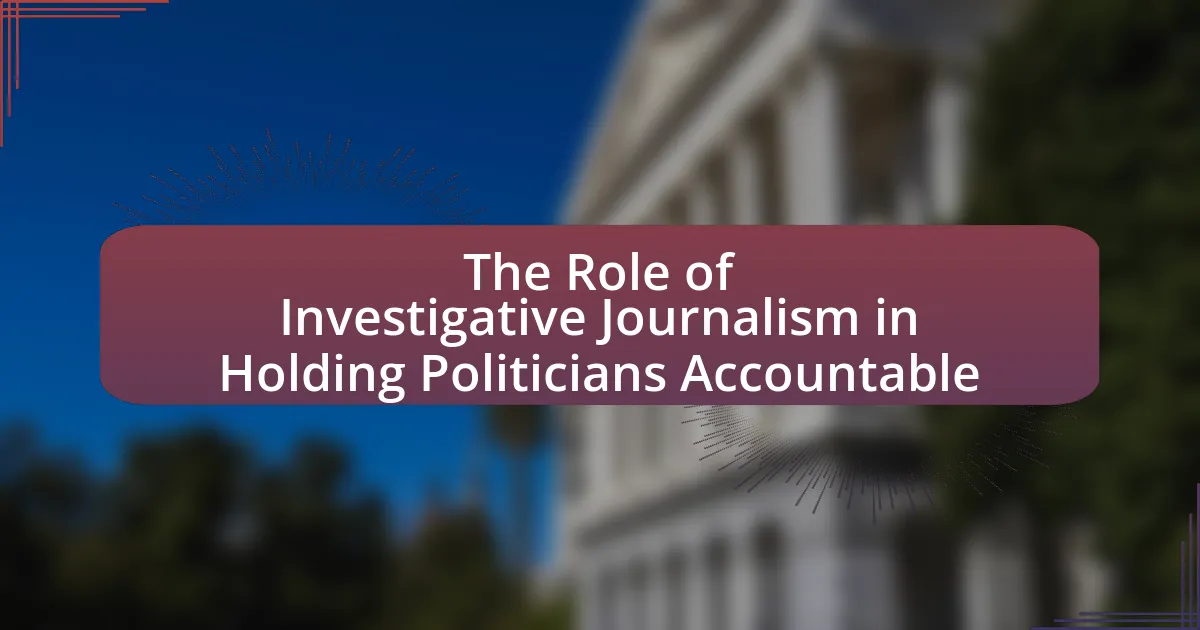The article analyzes the impact of news outlets on public perception of election candidates, highlighting how media coverage influences voter attitudes and behaviors. It discusses the role of framing, headlines, and the credibility of news sources in shaping candidate images and public trust. Additionally, the article examines various biases in election coverage, the effects of sensationalism, and how demographic factors affect responses to news. It also explores strategies candidates can employ to counteract negative coverage and engage effectively with voters through direct communication and social media. Overall, the article underscores the significant implications of news outlet influence on electoral outcomes and public understanding of candidates.

What is the impact of news outlets on public perception of election candidates?
News outlets significantly shape public perception of election candidates by influencing the information that voters receive and how they interpret that information. Research indicates that media coverage can affect candidates’ visibility, framing, and overall public image, which in turn impacts voter attitudes and behaviors. For example, a study by the Pew Research Center found that candidates who receive more favorable media coverage tend to have higher approval ratings among voters, while negative coverage can lead to decreased support. This demonstrates that the tone and frequency of news reporting play a crucial role in shaping public opinion during elections.
How do news outlets shape public opinion during elections?
News outlets shape public opinion during elections by framing narratives, selecting which stories to highlight, and influencing the discourse surrounding candidates. For instance, studies have shown that the way media presents candidates—through headlines, tone, and focus—can significantly affect voter perceptions and preferences. Research by the Pew Research Center indicates that 62% of Americans believe news organizations favor one side over another, which can lead to biased interpretations of candidates’ actions and policies. Furthermore, the use of polls and expert opinions in news coverage can create a bandwagon effect, where voters align with perceived popular choices, thereby reinforcing specific public sentiments.
What role do headlines play in influencing voter perceptions?
Headlines significantly influence voter perceptions by shaping the initial impressions and framing of political candidates. Research indicates that headlines can evoke emotional responses and highlight specific attributes of candidates, thereby guiding voters’ opinions. For instance, a study published in the Journal of Communication found that positively framed headlines about a candidate increased favorable perceptions, while negatively framed headlines led to more critical views. This demonstrates that the wording and tone of headlines can directly affect how voters interpret candidates’ qualifications and character, ultimately impacting their voting decisions.
How does the framing of news stories affect candidate image?
The framing of news stories significantly affects candidate image by shaping public perception through selective emphasis on certain aspects of a candidate’s behavior, policies, or character. For instance, when news outlets highlight a candidate’s achievements and positive attributes, it can enhance their image, leading to increased voter support. Conversely, if the framing focuses on negative incidents or controversies, it can damage the candidate’s reputation and decrease public trust. Research by Entman (1993) in “Framing: Toward Clarification of a Fractured Paradigm” illustrates that the way information is presented influences audience interpretation, thereby affecting how candidates are perceived in the electoral context.
Why is the credibility of news outlets important in elections?
The credibility of news outlets is crucial in elections because it directly influences public trust and voter behavior. When news outlets are perceived as credible, they provide reliable information that helps voters make informed decisions about candidates and policies. Research indicates that credible news sources can significantly shape public opinion; for instance, a study by the Pew Research Center found that 62% of Americans believe that news organizations play a critical role in informing the public about elections. This trust in credible outlets can lead to higher voter engagement and participation, as individuals are more likely to act on information they deem trustworthy.
What factors contribute to the perceived credibility of a news outlet?
The perceived credibility of a news outlet is primarily influenced by its adherence to journalistic standards, transparency, and audience trust. News outlets that consistently provide accurate, well-sourced information and maintain a clear separation between news and opinion are viewed as more credible. For instance, a study by the Pew Research Center found that 62% of Americans believe that news organizations that correct their mistakes enhance their credibility. Additionally, the presence of experienced journalists and editorial oversight contributes to the perception of reliability. Outlets that disclose their sources and methodologies also foster trust, as transparency is a key factor in how audiences assess credibility.
How does credibility impact voter trust in election coverage?
Credibility significantly impacts voter trust in election coverage by influencing how voters perceive the reliability of information presented by news outlets. When news organizations are viewed as credible, voters are more likely to trust the accuracy of the election coverage, leading to informed decision-making. Research indicates that 62% of voters rely on credible news sources for election information, as highlighted in a study by the Pew Research Center, which found that trust in media correlates with voter engagement and participation in elections. Conversely, when coverage is perceived as biased or unreliable, voter trust diminishes, resulting in skepticism and disengagement from the electoral process.
What types of biases exist in election coverage?
Election coverage can exhibit several types of biases, including partisan bias, selection bias, framing bias, and confirmation bias. Partisan bias occurs when news outlets favor one political party over another, influencing the portrayal of candidates and issues. Selection bias arises when certain stories or aspects of a campaign are highlighted while others are ignored, shaping public perception based on incomplete information. Framing bias involves presenting information in a way that emphasizes particular interpretations or viewpoints, which can skew audience understanding. Confirmation bias is the tendency for media to report on information that aligns with their audience’s pre-existing beliefs, reinforcing those beliefs rather than challenging them. These biases can significantly affect how voters perceive candidates and their platforms, ultimately impacting electoral outcomes.
How do partisan news outlets influence public perception?
Partisan news outlets influence public perception by shaping narratives that align with specific political ideologies, thereby reinforcing existing beliefs among their audiences. Research indicates that individuals exposed to partisan media are more likely to adopt polarized views, as these outlets selectively present information that supports their ideological stance while omitting or downplaying opposing viewpoints. For instance, a study by the Pew Research Center found that 62% of Americans believe that news organizations favor one side in their reporting, which can lead to increased political polarization and a distorted understanding of issues. This selective exposure to information creates echo chambers, where individuals are less likely to encounter diverse perspectives, further entrenching their beliefs and influencing their perceptions of election candidates.
What are the effects of sensationalism in election reporting?
Sensationalism in election reporting leads to distorted public perceptions of candidates and issues. This type of reporting often prioritizes dramatic narratives over factual accuracy, resulting in voters being misinformed about candidates’ policies and qualifications. Research indicates that sensationalized coverage can increase voter anxiety and polarization, as seen in the 2016 U.S. presidential election, where exaggerated claims and emotional appeals dominated media narratives. Consequently, sensationalism undermines informed decision-making, as voters may base their choices on misleading information rather than substantive analysis.

How do different demographics respond to news coverage of election candidates?
Different demographics respond to news coverage of election candidates in varied ways, influenced by factors such as age, race, education, and political affiliation. For instance, younger voters tend to engage more with digital news platforms and social media, leading to a preference for candidates who utilize these channels effectively. In contrast, older demographics often rely on traditional media sources like television and newspapers, which can shape their perceptions based on the framing and tone of coverage. Research from the Pew Research Center indicates that racial and ethnic minorities may respond more positively to candidates who address issues pertinent to their communities, while white voters might prioritize economic policies. Additionally, educational background influences how individuals interpret news; those with higher education levels often seek out diverse viewpoints, whereas less-educated individuals may gravitate towards confirmation bias in their news consumption. These demographic factors collectively shape public perception and voting behavior, highlighting the importance of tailored communication strategies by candidates to resonate with different audience segments.
What demographic factors influence perceptions of candidates?
Demographic factors such as age, gender, race, education level, and socioeconomic status significantly influence perceptions of candidates. Research indicates that younger voters tend to prioritize issues like climate change and social justice, while older voters may focus on economic stability and healthcare. Gender influences perceptions as well, with female candidates often facing different scrutiny compared to their male counterparts. Racial and ethnic backgrounds can shape voter preferences, as minority groups may resonate more with candidates who share similar experiences or advocate for their interests. Education level affects how individuals interpret candidates’ policies and rhetoric, with more educated voters often seeking detailed policy proposals. Socioeconomic status can also dictate which issues are prioritized, as individuals from different economic backgrounds may have varying concerns regarding taxation, social services, and job creation. These demographic factors collectively shape the public’s perception of candidates during elections.
How do age and education level affect responses to news coverage?
Age and education level significantly influence responses to news coverage. Older individuals tend to have different perspectives and interpretations of news compared to younger audiences, often shaped by their life experiences and historical context. For instance, research indicates that younger people are more likely to engage with digital news platforms and social media, leading to a preference for concise and visually engaging content. In contrast, older adults may prefer traditional news formats, such as newspapers or television, which can affect their understanding and retention of information.
Education level also plays a crucial role; individuals with higher education levels are generally more critical of news sources and better equipped to analyze information. Studies show that educated audiences are more likely to seek out diverse viewpoints and verify facts, while those with lower education levels may rely on familiar sources, potentially leading to confirmation bias. This dynamic can shape public perception of election candidates, as different demographic groups interpret news coverage through varied lenses influenced by their age and educational background.
What role does geographic location play in shaping public opinion?
Geographic location significantly influences public opinion by affecting access to information, cultural values, and social interactions. For instance, urban areas often have diverse populations and greater access to various news outlets, leading to more liberal viewpoints, while rural areas may have limited media exposure and more conservative perspectives. A study by the Pew Research Center found that individuals in urban settings are more likely to consume news from multiple sources, which can shape more nuanced opinions compared to those in rural areas who may rely on local news, which often reflects community norms and values. This disparity in media consumption and cultural context illustrates how geographic location plays a crucial role in shaping the public’s political attitudes and opinions.
How do social media platforms amplify news coverage effects?
Social media platforms amplify news coverage effects by enabling rapid dissemination and engagement with news content, which increases visibility and influence. The algorithms used by these platforms prioritize trending topics, allowing news stories to reach larger audiences quickly. For instance, a study by the Pew Research Center found that 62% of U.S. adults get news from social media, highlighting its role in shaping public perception. Additionally, user interactions such as shares, likes, and comments create a feedback loop that further elevates the prominence of specific news narratives, thereby affecting how election candidates are perceived by the public.
What is the relationship between social media and traditional news outlets?
The relationship between social media and traditional news outlets is one of both competition and collaboration. Social media platforms have become primary sources for news consumption, often breaking stories faster than traditional outlets, which can lead to a decline in traditional media’s audience and advertising revenue. According to a Pew Research Center study, 62% of Americans get news from social media, highlighting its significant role in shaping public perception. Additionally, traditional news outlets increasingly use social media to distribute content and engage with audiences, creating a symbiotic relationship where both entities influence public discourse and perception, particularly during election cycles.
How do algorithms influence the visibility of election-related news?
Algorithms significantly influence the visibility of election-related news by determining which stories are prioritized in users’ feeds based on engagement metrics and user preferences. These algorithms analyze data such as user interactions, search history, and demographic information to curate content that aligns with individual interests, often amplifying sensational or polarizing news. For instance, a study by the Pew Research Center found that social media platforms like Facebook and Twitter use algorithms that favor content with higher engagement, which can lead to the spread of misinformation and biased narratives during elections. This selective visibility shapes public perception by reinforcing existing beliefs and limiting exposure to diverse viewpoints.
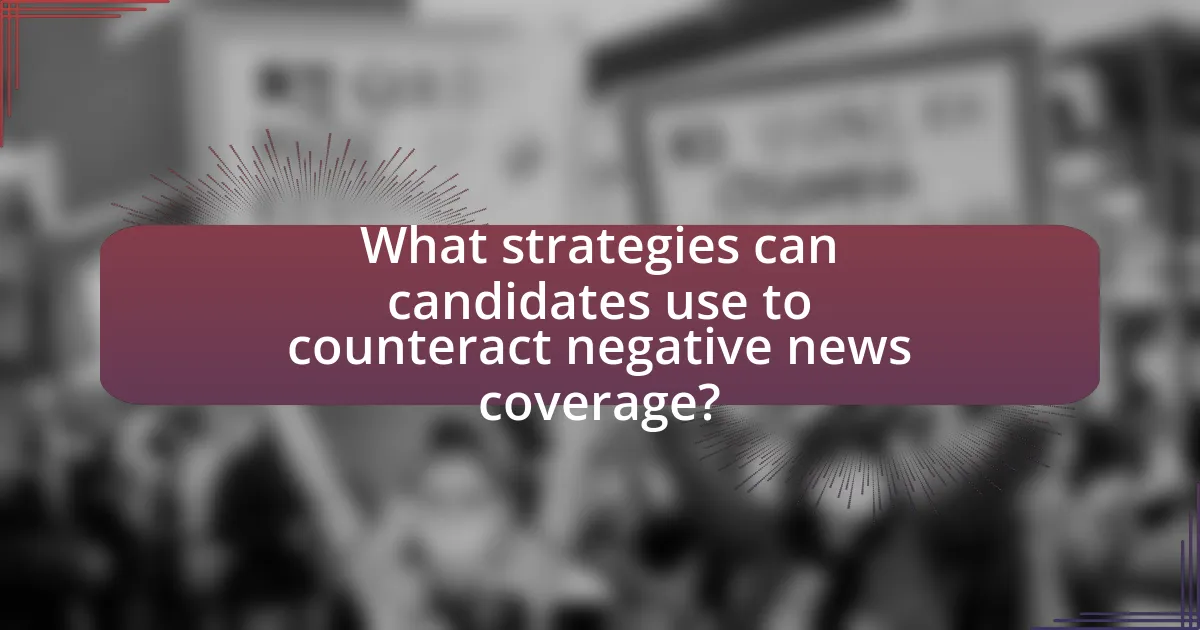
What strategies can candidates use to counteract negative news coverage?
Candidates can counteract negative news coverage by proactively engaging with the media, utilizing social media platforms, and focusing on positive messaging. Proactive media engagement involves directly addressing negative stories through press releases or interviews, allowing candidates to present their side of the story. Utilizing social media platforms enables candidates to communicate directly with voters, bypassing traditional media filters and shaping their narrative. Focusing on positive messaging helps to shift public attention away from negative coverage by highlighting achievements, policy proposals, and community involvement. Research indicates that candidates who maintain a strong online presence and engage with their audience effectively can mitigate the impact of negative press, as seen in the 2020 U.S. presidential election where social media played a crucial role in shaping public perception.
How can candidates effectively communicate their message despite media bias?
Candidates can effectively communicate their message despite media bias by utilizing direct communication channels such as social media, town hall meetings, and personal outreach. These platforms allow candidates to bypass traditional media filters and engage directly with voters, ensuring their message is conveyed accurately. For instance, a study by the Pew Research Center found that 69% of adults in the U.S. use social media, making it a powerful tool for candidates to share their perspectives and respond to misinformation. By actively managing their online presence and engaging with constituents, candidates can mitigate the effects of biased media coverage and foster a more accurate public perception.
What role does direct communication with voters play in shaping perceptions?
Direct communication with voters significantly influences their perceptions of candidates. This interaction fosters a sense of connection and trust, allowing candidates to convey their messages authentically and address voter concerns directly. Research indicates that candidates who engage in direct communication, such as town hall meetings or social media interactions, can enhance their relatability and credibility, leading to more favorable public perceptions. For instance, a study by the Pew Research Center found that 69% of voters felt more positively about candidates who actively communicated with them through social media platforms. This evidence underscores the critical role that direct communication plays in shaping voter perceptions during elections.
How can candidates leverage social media to combat negative narratives?
Candidates can leverage social media by actively engaging with their audience to counter negative narratives. By creating authentic content that addresses misinformation directly, candidates can reshape public perception. For instance, a study by the Pew Research Center found that 69% of adults in the U.S. use social media, making it a powerful platform for candidates to disseminate their messages and clarify misconceptions. Additionally, candidates can utilize real-time responses to negative comments or stories, fostering transparency and trust. This proactive approach not only mitigates the impact of negative narratives but also enhances the candidate’s credibility among voters.
What best practices should candidates follow in response to media coverage?
Candidates should respond to media coverage by maintaining transparency, addressing inaccuracies promptly, and engaging with the audience through appropriate channels. Transparency builds trust; for instance, when candidates openly share their positions and clarify their statements, they foster credibility. Addressing inaccuracies is crucial; research shows that timely corrections can mitigate misinformation’s impact on public perception. Engaging with the audience through social media or press releases allows candidates to shape narratives and connect directly with voters, enhancing their public image. These practices collectively help candidates manage their media presence effectively.
How can candidates build relationships with journalists to improve coverage?
Candidates can build relationships with journalists by engaging in consistent, transparent communication and providing valuable information. Establishing trust through regular interactions, such as offering exclusive interviews or timely updates on campaign developments, fosters a positive rapport. Additionally, candidates should understand journalists’ needs by being responsive to inquiries and respecting deadlines, which enhances the likelihood of favorable coverage. Research indicates that candidates who actively cultivate media relationships often receive more balanced and extensive reporting, as seen in studies analyzing media coverage patterns during elections.
What are effective ways to address misinformation in the media?
Effective ways to address misinformation in the media include implementing fact-checking initiatives, promoting media literacy, and encouraging transparency from news organizations. Fact-checking initiatives, such as those conducted by organizations like PolitiFact and FactCheck.org, provide accurate information to counter false claims, thereby reducing the spread of misinformation. Promoting media literacy equips the public with skills to critically evaluate sources and discern credible information, which is essential in an era of rapid information dissemination. Additionally, encouraging transparency from news organizations, such as disclosing sources and funding, fosters trust and accountability, making it easier for audiences to identify biased or misleading content. These strategies collectively enhance the public’s ability to navigate media landscapes effectively.
What are the implications of news outlet influence on election outcomes?
News outlet influence significantly shapes election outcomes by affecting public perception and voter behavior. Research indicates that media coverage can sway voter opinions, with studies showing that candidates receiving more favorable coverage tend to gain higher support in polls. For instance, a study by the Pew Research Center found that 62% of voters reported that news coverage influenced their voting decisions in the 2020 U.S. presidential election. Additionally, biased reporting can lead to misinformation, which distorts public understanding of candidates’ policies and qualifications, further impacting electoral results. Thus, the implications of news outlet influence are profound, as they can determine not only the visibility of candidates but also the overall democratic process.
